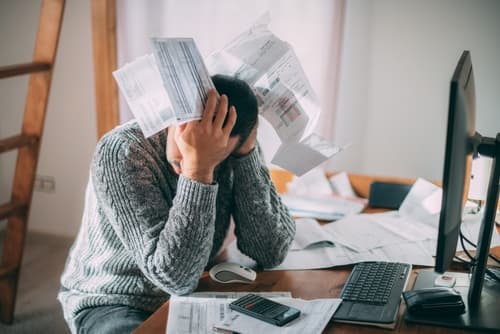Selling Your Home During Pre-Foreclosure or Forbearance: What You Need to Know
If you’re reading this, you’re already taking control—and that’s the best first step. Selling your home during forbearance or pre-foreclosure may seem overwhelming, but with the right strategy and support, it’s entirely possible
What Is Pre-Foreclosure?
Pre-foreclosure is the early warning stage in the foreclosure process. It starts when a homeowner misses multiple mortgage payments—typically three or more—and the lender issues a formal Notice of Default. This notice tells the homeowner that legal action is on the horizon if the loan isn’t brought current.
At this point, the homeowner still legally owns the property and has several options to avoid foreclosure—like repayment plans, loan modifications, or even selling the home before the bank takes further steps.
How the Pre-Foreclosure Process Works
When you buy a home with a mortgage, you agree to make monthly payments covering both the loan’s principal and interest. If those payments fall behind for several months, the lender can legally step in.
Once you’re in default, the lender will file a Notice of Default with the court—this kicks off the pre-foreclosure period. This stage can last anywhere from a few weeks to over a year, depending on your state’s laws and how quickly the lender moves.
During this time, you’ll still have a chance to:
-
Catch up on missed payments
-
Refinance or renegotiate your loan
-
Sell your home to avoid foreclosure
Many lenders actually prefer to avoid foreclosure because of the high costs and delays involved. That means you might be able to work out a payment plan or qualify for a short sale, where the home is sold for less than what’s owed—with lender approval.
Can You Sell Your Home During Pre-Foreclosure?
Yes, and in many cases, selling is the smartest way out. If you have enough equity in your home, you can list it and use the proceeds to pay off your mortgage—avoiding foreclosure entirely.
If you’re underwater (meaning you owe more than your home is worth), a short sale might be an option. This is where your lender agrees to accept less than what’s owed. Short sales often involve a few extra steps and lender approvals, but they’re still far better than letting the home go to auction.
💡 Pro Tip: Not all short sales are technically in pre-foreclosure. Some homeowners choose to sell early—before they’ve even missed payments—to avoid that legal stage altogether.
Pros and Cons of Selling During Pre-Foreclosure
Benefits:
-
Avoids foreclosure on your credit report
-
Offers more control over the outcome
-
May let you walk away with some equity
-
Stops legal and collection activity
Challenges:
-
Must act quickly—time is limited
-
Can be emotionally stressful
-
Requires coordination with your lender
-
Potential for legal or tax implications
What If You Don’t Sell?
If you don’t make up the missed payments or sell your home during pre-foreclosure, the lender may move forward with a foreclosure judgment. At that point, you could lose your home to a public auction or trustee sale, and eventually face eviction.
Once the home is repossessed by the lender, it’s typically sold at a deep discount—sometimes for less than what you could have gotten during pre-foreclosure.
Understanding Short Sales
A short sale happens when a homeowner sells their property for less than the remaining mortgage balance. It requires lender approval and often involves more paperwork, but it can be a great way to settle debt and avoid foreclosure.
Buyers of pre-foreclosed homes—especially investors—are usually looking for a deal below fair market value. If your home is in decent shape and priced right, you may be able to attract one of these buyers quickly. Just keep in mind that the bank will still have to approve the offer.
Federal Relief & COVID-19 Forbearance
During the COVID-19 pandemic, laws like the CARES Act gave many homeowners the right to pause their mortgage payments temporarily. This was known as forbearance, and in many cases, it helped prevent homes from entering pre-foreclosure or foreclosure altogether.
Although most of those relief programs have ended, the spirit of flexibility still exists. Private lenders may still offer loan modifications or payment plans to help you avoid losing your home.
How to Know if You’re in Pre-Foreclosure
You’ll typically receive a Notice of Default in the mail or via public records. This is your official warning that pre-foreclosure has begun. If you’ve missed three or more mortgage payments, you may already be in this stage.
Still unsure? Call your lender or check your local court or county clerk’s office to see if any default notices have been filed.
Pre-Foreclosure vs. Foreclosure: What’s the Difference?
Pre-foreclosure is your chance to fix things. It’s a window of time where you can:
-
Make up missed payments
-
Negotiate with your lender
-
Sell your home voluntarily
Foreclosure is the endgame. It happens when the lender takes full legal ownership of the home, and you lose all rights to the property.
Final Thoughts: You Have More Power Than You Think
Pre-foreclosure might feel like a crisis—but it’s also an opportunity. You still have time to turn things around. Whether that means catching up on payments, applying for relief, or selling your home, this stage gives you options.
The worst thing you can do? Ignore it. The sooner you act, the more control you’ll have.
Need Help?
If you’re unsure where to start when Selling Your Home During Pre-Foreclosure or Forbearance consider:
-
Calling your lender and asking for your payoff amount
-
Speaking to a HUD-approved housing counselor
-
Working with a real estate agent who specializes in distressed properties
Or feel free to reach out—we’re happy to help guide you through the process.


 Facebook
Facebook
 X
X
 Pinterest
Pinterest
 Copy Link
Copy Link
